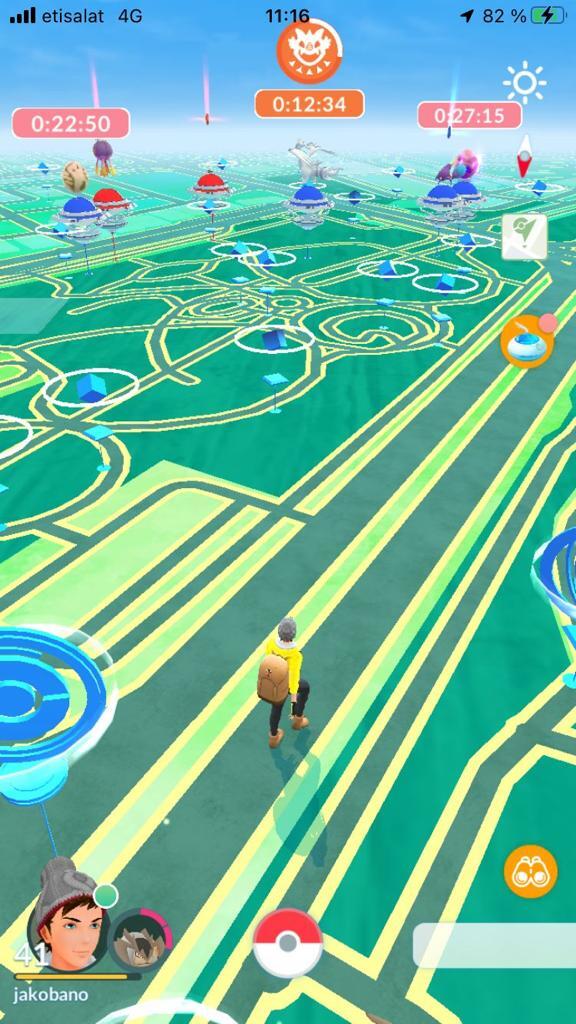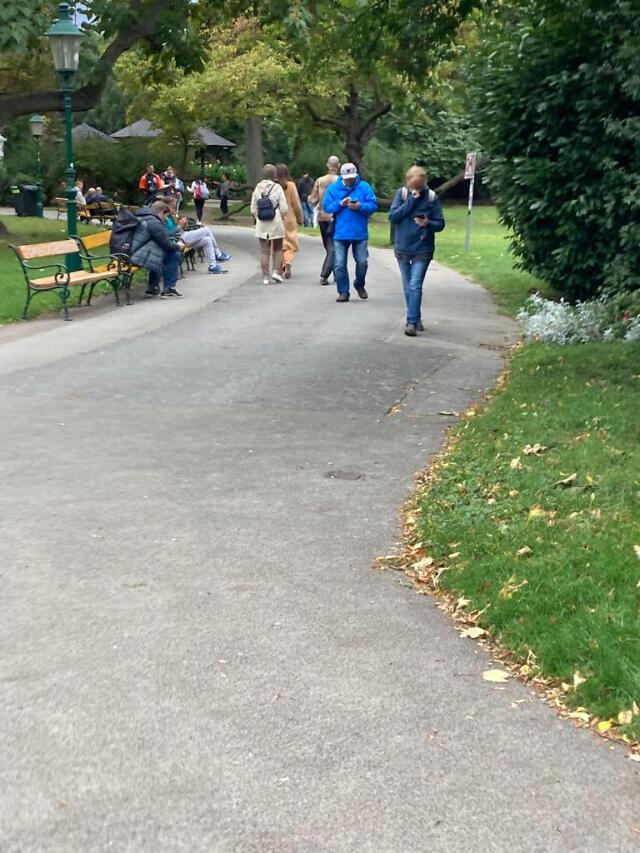Full Text
Pokémon Go goes Stadtpark The city park is located in the 1st district, and ‘Am Heumarkt’ in the 3rd district, opening its doors in 1862. Spanning over 95,000 square meters, it ranks among the largest and most popular recreational areas in the heart of the city, offering numerous entertainment options for leisure activities. [1] The former grounds for defense, the so called Wasserglacis area were already utilized during the Biedermeier era, featuring promenades for relaxation and entertainment. [2] After the demolition of the city wall and its subsequent transformation into the Vienna Ringstrasse in the first half of the 19th century, these areas became available for reuse. The park was established and initiated under the leadership of the then Viennese Mayor Andreas Zelinka, designed in the style of English landscape parks with grand avenues, picturesque meadows, and artificially created water areas. [3] In addition to strolling through the park, adorned with numerous monuments and decorative fountains, the eastern part of the park, in particular, provides space for play. This includes a basketball and football field, a skatepark for sports activities, and two playgrounds equipped with slides, climbing structures, and swings. The release of the location-specific augmented reality game Pokémon Go transformed Stadtpark into a community space. The park became not only a part of the exchange around the game but also an active element of the player experience: the park turned into a game board! Pokémon Go is a location-based augmented reality game for mobile devices and tablets, developed by Niantic in collaboration with The Pokémon Company and Nintendo, and released in June 2016. Pokémon Go quickly became the fastest game to rise to the top of the Apple App Store and Google Play Store. [4] According to the web analytics company Similarweb, the app was installed on 5% of all Android devices in the USA just two days after its release. [5] The gameplay of Pokémon Go involves players navigating through a virtual world based on the GPS signal of their mobile device, capturing Pokémon, which are fantasy creatures from The Pokémon Company's franchise. The game server randomly populates the virtual map of players with these creatures. If multiple players are in the same location, they all have the opportunity to independently see and capture the Pokémon that appear there. However, each player only has one chance to capture the same Pokémon for themselves. This is done by swiping a Pokéball onto the Pokémon using the touchscreen of their mobile phone. In theory, players can set the game space as they can play the game anywhere with a stable internet connection on their mobile device. However, there is a game infrastructure that makes playing Pokémon Go at specific locations more advantageous. This infrastructure consists of Pokéstops, where players can obtain virtual items such as new Pokéballs, and Gyms, where players can battle each other. Additionally, there is the option to enhance Pokéstops with so-called lure modules, which attract more Pokémon to the nearby area for 30 minutes. As a result, urban spaces became gaming spaces, and the city park became the first major hotspot in Vienna. This had several reasons. The park is easily accessible by the U4, U3, as well as by train and trams, and at that time, there were an above-average number of Pokéstops in the area, which were almost continuously enhanced with lure modules. As Kurier wrote on August 3, 2016, "Without permission: 4000 fans in the city park on Pokémon hunt." [6] The positioning of Pokéstops was based on the portal system of Ingress, the first location-based augmented reality game by Niantic, where instead of portals in Ingress, Pokéstops in Pokémon Go were positioned. These are mostly small landmarks in the environment. Starting from 2019, players were able to submit Pokéstops themselves, which were then evaluated by other players worldwide and subsequently accepted or rejected. Over the years, the density of Pokéstops has increased everywhere in the city of Vienna through this process because many players mean many Pokéstops and more Pokémon to catch. As a result, the city park no longer had such a unique selling proposition due to its initially unnaturally high number of Pokéstops, as there were several indifferent and even better places to play in Vienna. However, due to its history as the first Pokémon Go hotspot in Vienna, hundreds of players still gather every week to catch Pokémon even in November 2023. The evolution of Stadtpark from its origins as a defensive fortification into a vibrant socio-cultural hub reflects the dynamic nature of urban spaces. From its inception under Mayor Andreas Zelinka to its transformation into a playground for leisure and recreation, the park has continually adapted to the changing needs and desires. The advent of Pokémon Go marked a significant shift in how public spaces like Stadtpark are experienced and utilized. No longer merely a backdrop for daily activities, the park became an integral part of the gaming experience, blurring the lines between virtual and physical realms. As players navigated its pathways in search of elusive Pokémons, the park itself became a living, breathing game board, fostering social interaction and community engagement on a scale previously unseen. This transformation prompts us to reconsider the role of urban spaces in our lives and the potential for play to reshape our perceptions of the city. What does it mean when parks, streets, and landmarks become arenas for digital exploration and competition? How do elements of the built environment influence the gameplay, and what implications does this have for our understanding of public space? Ultimately, the convergence of play and urban life in Stadtpark invites us to rethink traditional notions of leisure, community, and public engagement. As we continue to navigate the ever-changing landscape of modern cities, the renegotiation of public space through activities like Pokémon Go offers a glimpse into the possibilities for collective interaction in the urban environment through play. [1] https://www.wien.gv.at/umwelt/parks/anlagen/stadtpark.html [2] https://www.geschichtewiki.wien.gv.at/Wasserglacis [3] https://www.geschichtewiki.wien.gv.at/Stadtpark [4] https://venturebeat.com/games/pokemon-go-outpaces-clash-royale-as-the-fastest-game-ever-to-no-1-on-the-mobile-revenue-charts/ [5] https://www.yahoo.com/tech/pokemon-game-adds-7-5-095739989.html [6] https://kurier.at/chronik/wien/ohne-genehmigung-4000-fans-im-stadtpark-auf-pokemon-jagd/213.420.284


